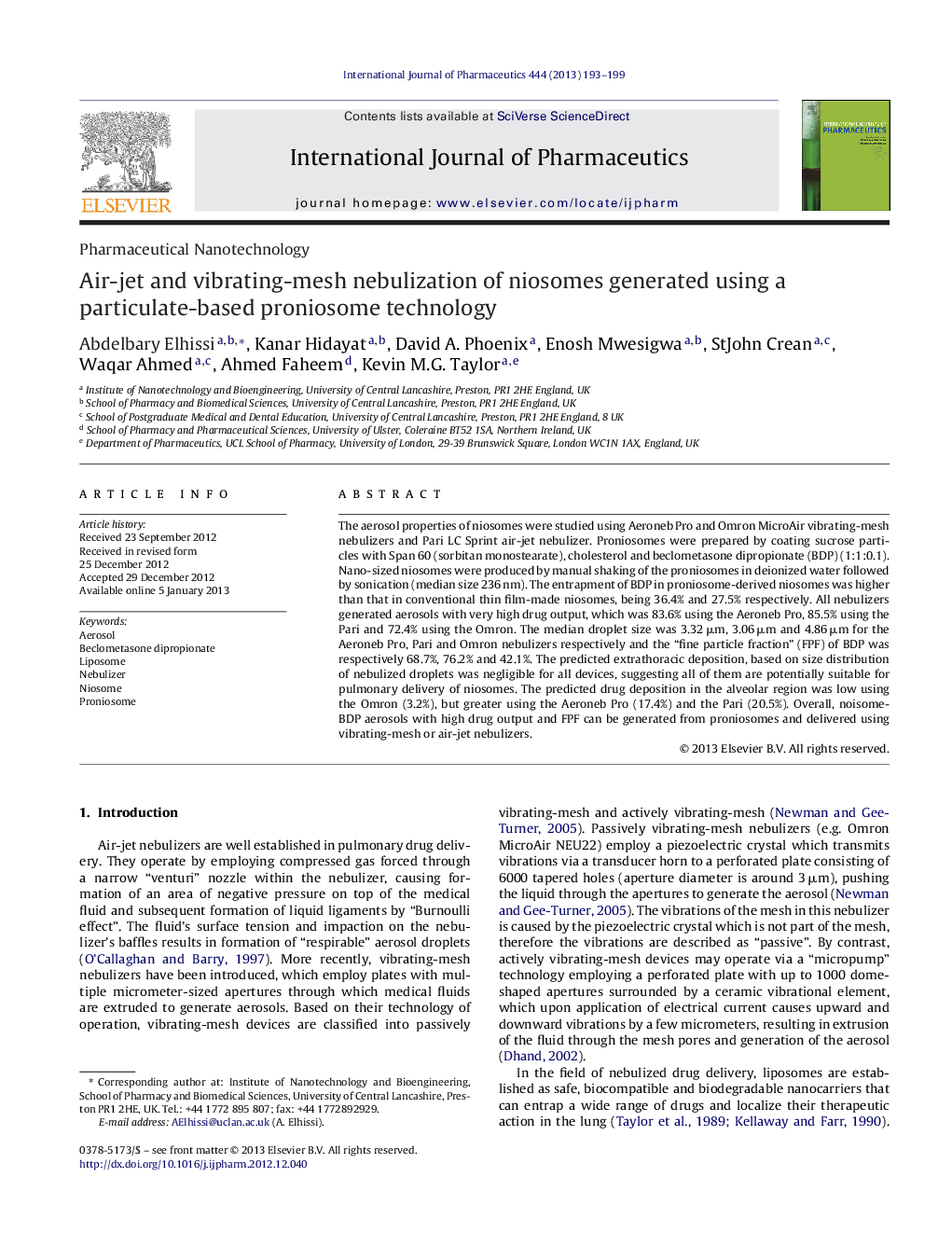| Article ID | Journal | Published Year | Pages | File Type |
|---|---|---|---|---|
| 2502513 | International Journal of Pharmaceutics | 2013 | 7 Pages |
The aerosol properties of niosomes were studied using Aeroneb Pro and Omron MicroAir vibrating-mesh nebulizers and Pari LC Sprint air-jet nebulizer. Proniosomes were prepared by coating sucrose particles with Span 60 (sorbitan monostearate), cholesterol and beclometasone dipropionate (BDP) (1:1:0.1). Nano-sized niosomes were produced by manual shaking of the proniosomes in deionized water followed by sonication (median size 236 nm). The entrapment of BDP in proniosome-derived niosomes was higher than that in conventional thin film-made niosomes, being 36.4% and 27.5% respectively. All nebulizers generated aerosols with very high drug output, which was 83.6% using the Aeroneb Pro, 85.5% using the Pari and 72.4% using the Omron. The median droplet size was 3.32 μm, 3.06 μm and 4.86 μm for the Aeroneb Pro, Pari and Omron nebulizers respectively and the “fine particle fraction” (FPF) of BDP was respectively 68.7%, 76.2% and 42.1%. The predicted extrathoracic deposition, based on size distribution of nebulized droplets was negligible for all devices, suggesting all of them are potentially suitable for pulmonary delivery of niosomes. The predicted drug deposition in the alveolar region was low using the Omron (3.2%), but greater using the Aeroneb Pro (17.4%) and the Pari (20.5%). Overall, noisome-BDP aerosols with high drug output and FPF can be generated from proniosomes and delivered using vibrating-mesh or air-jet nebulizers.
Graphical abstractFigure optionsDownload full-size imageDownload high-quality image (134 K)Download as PowerPoint slide
